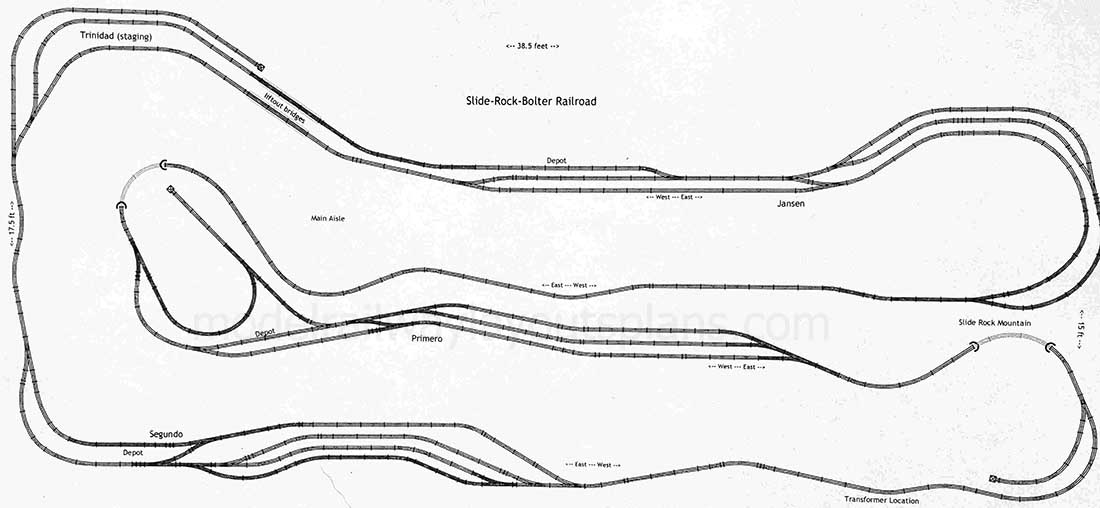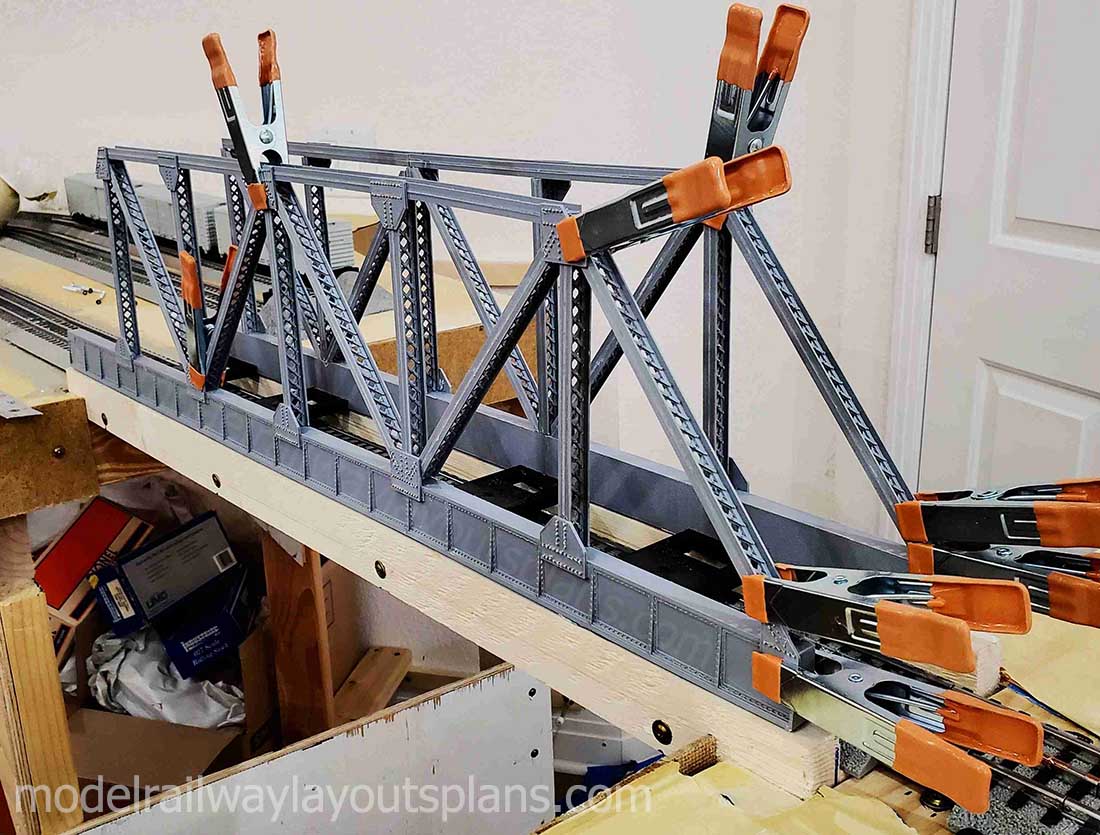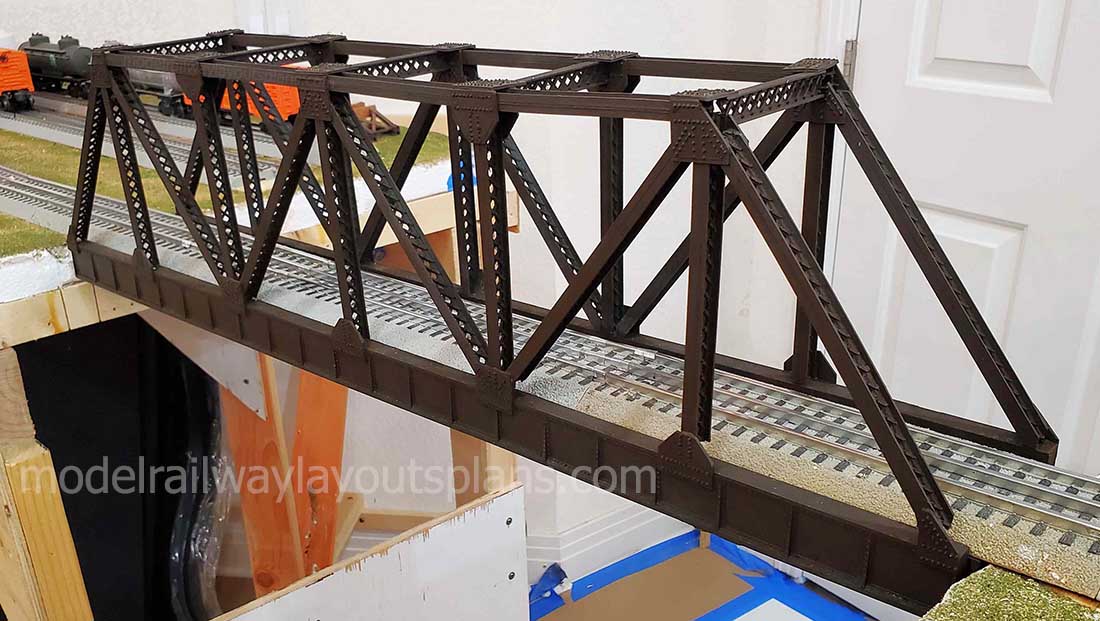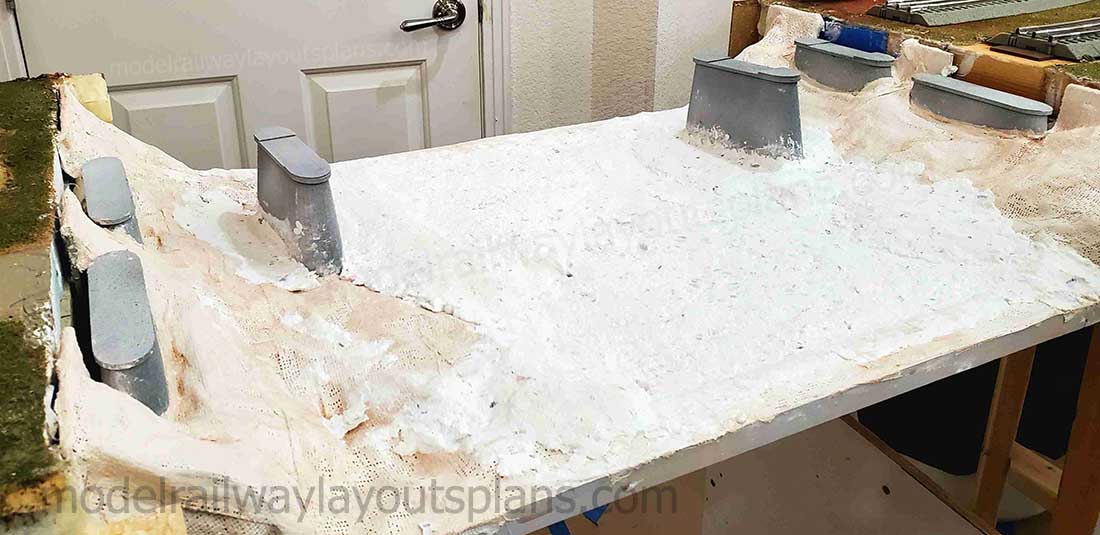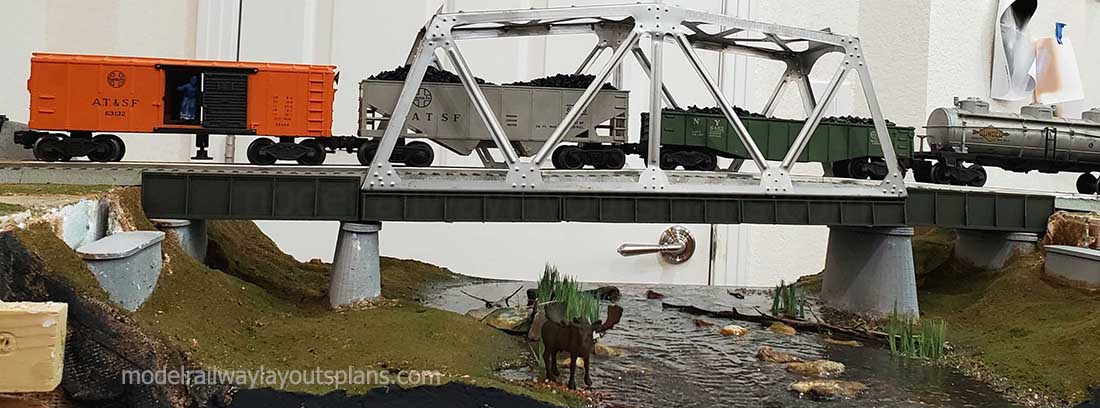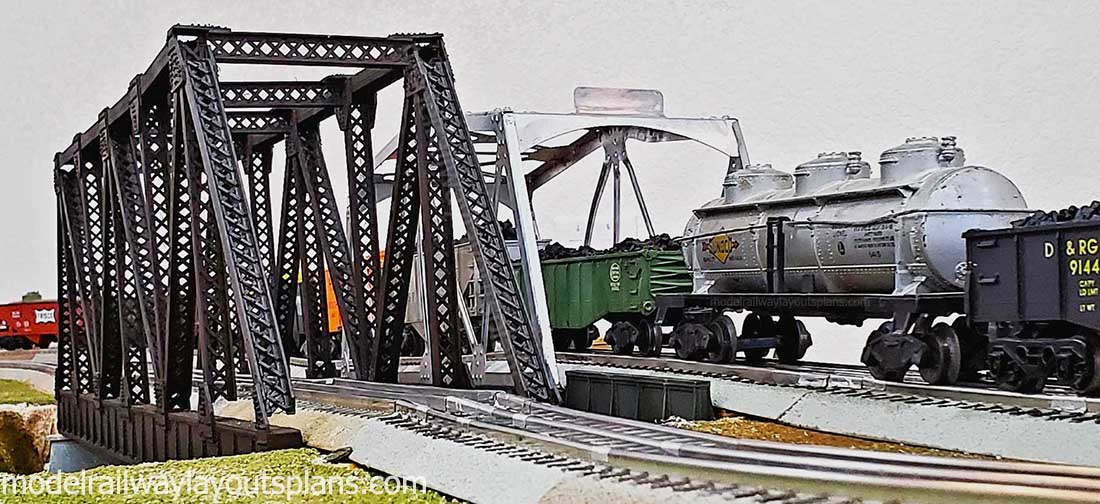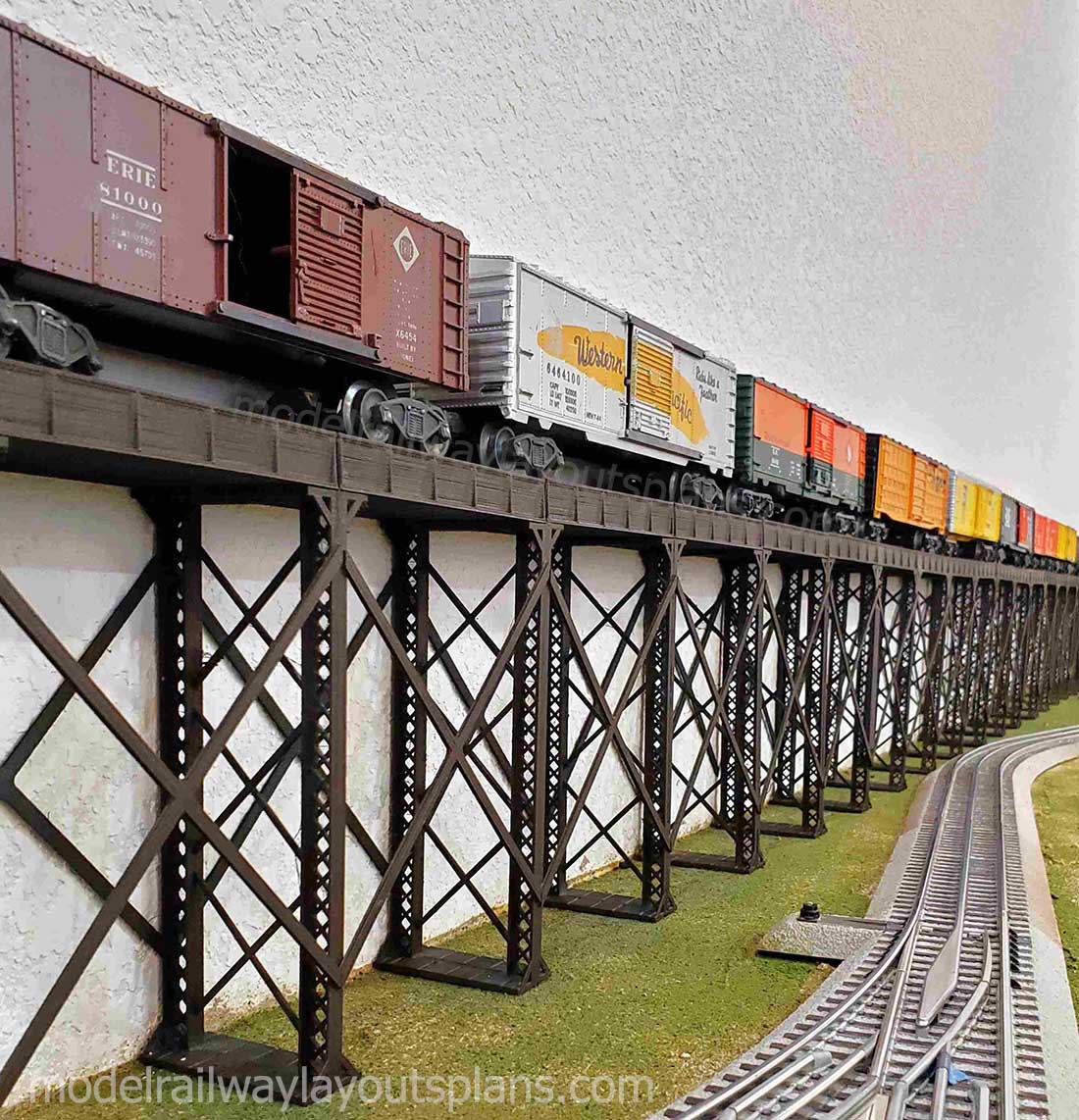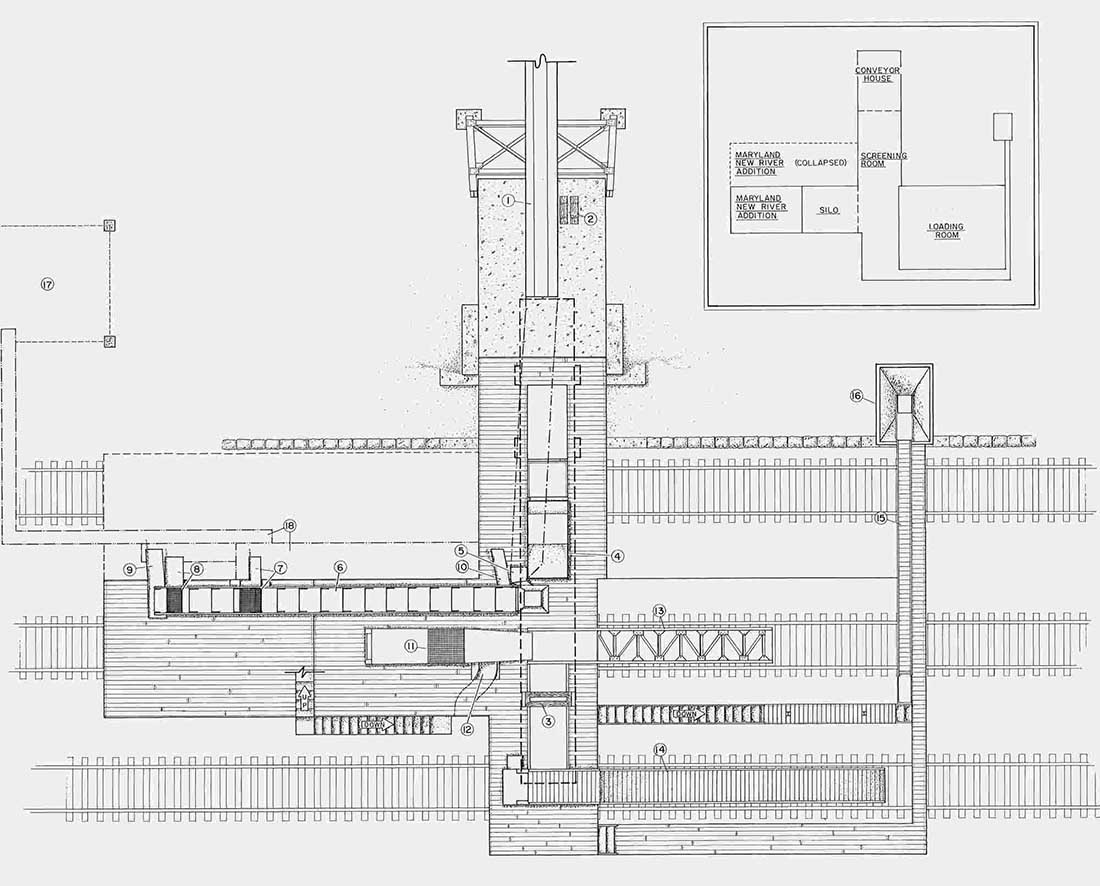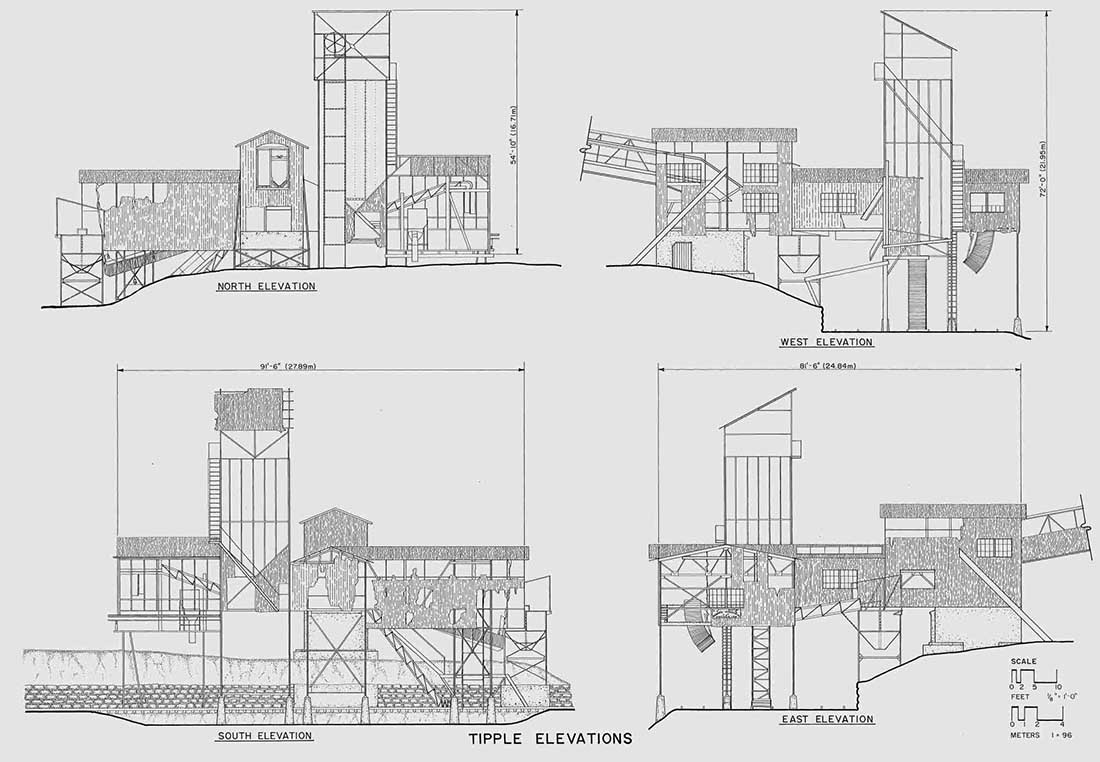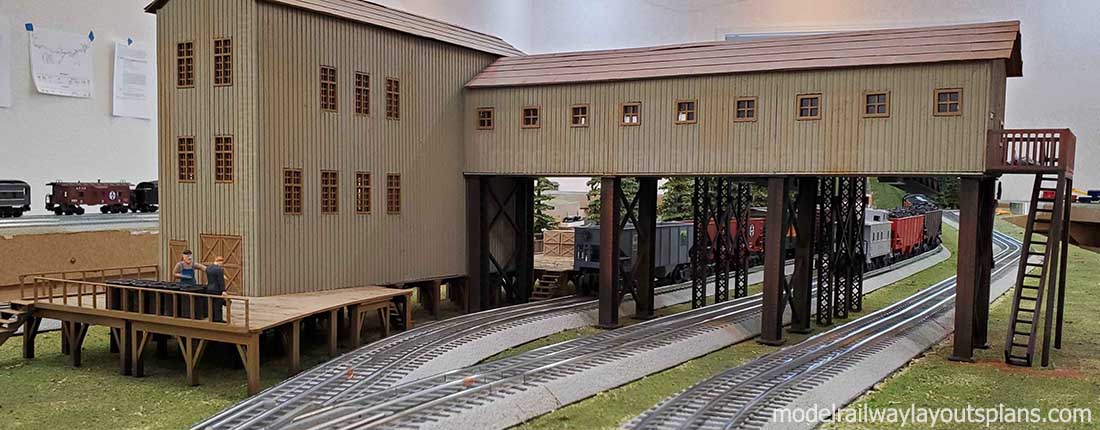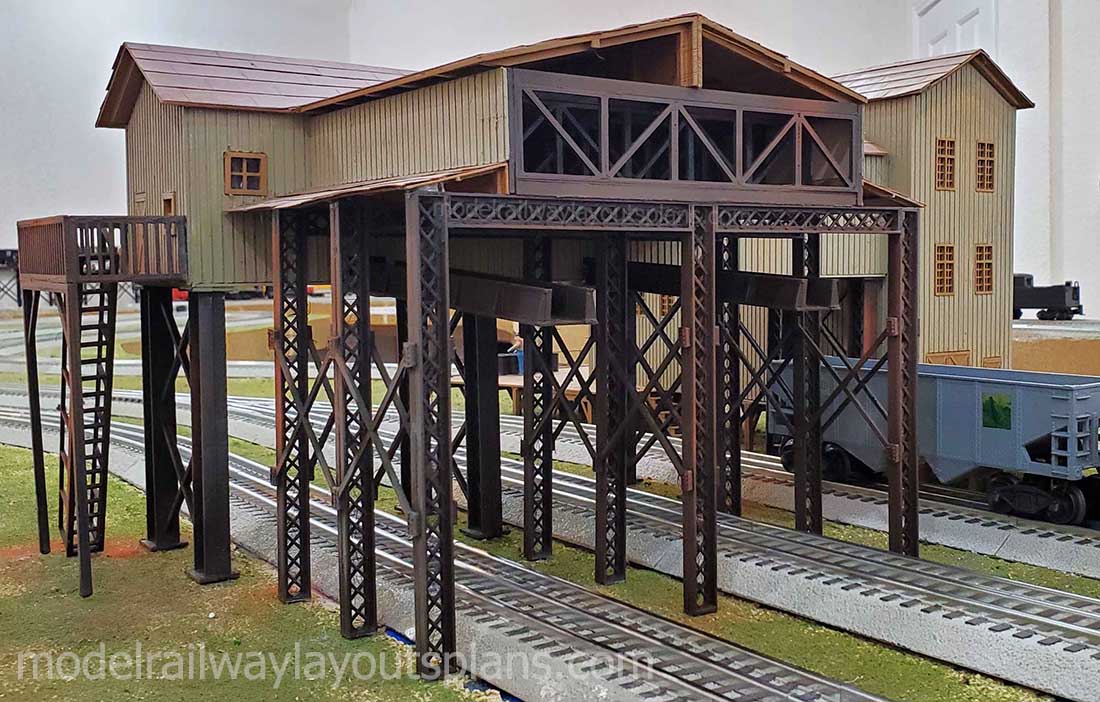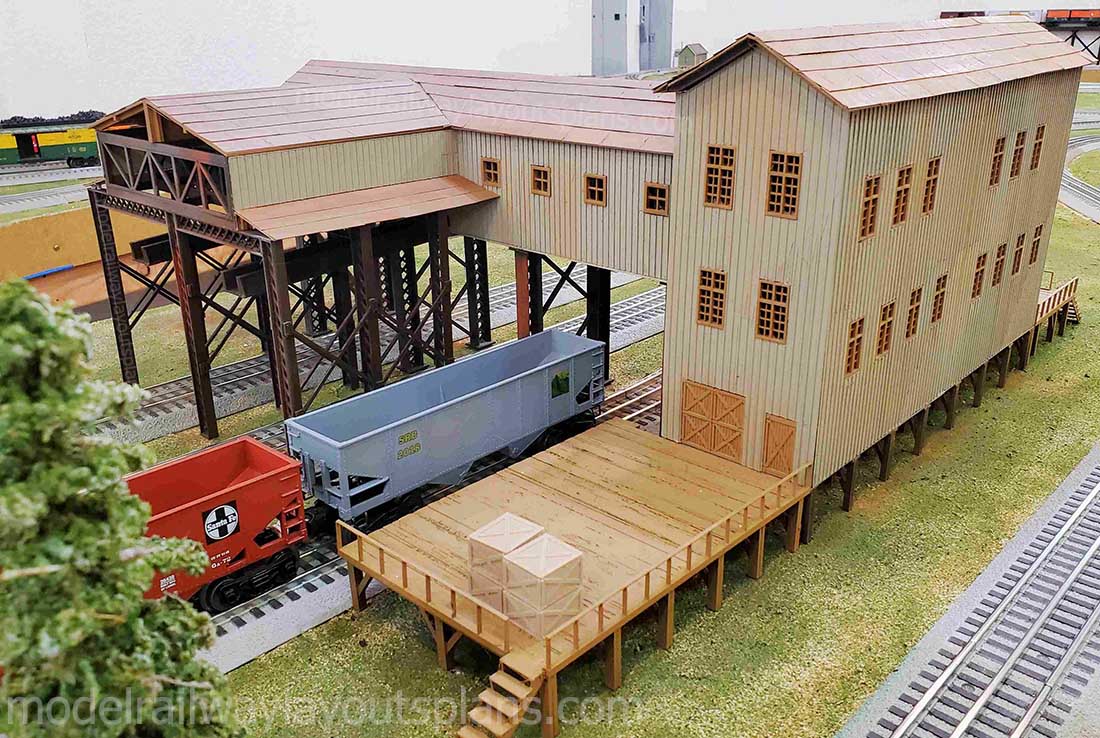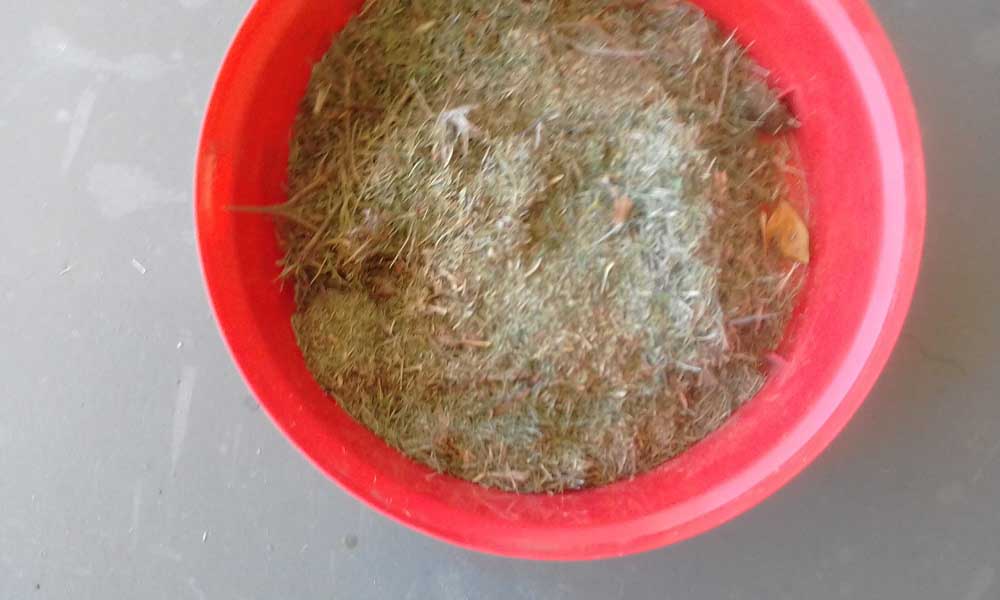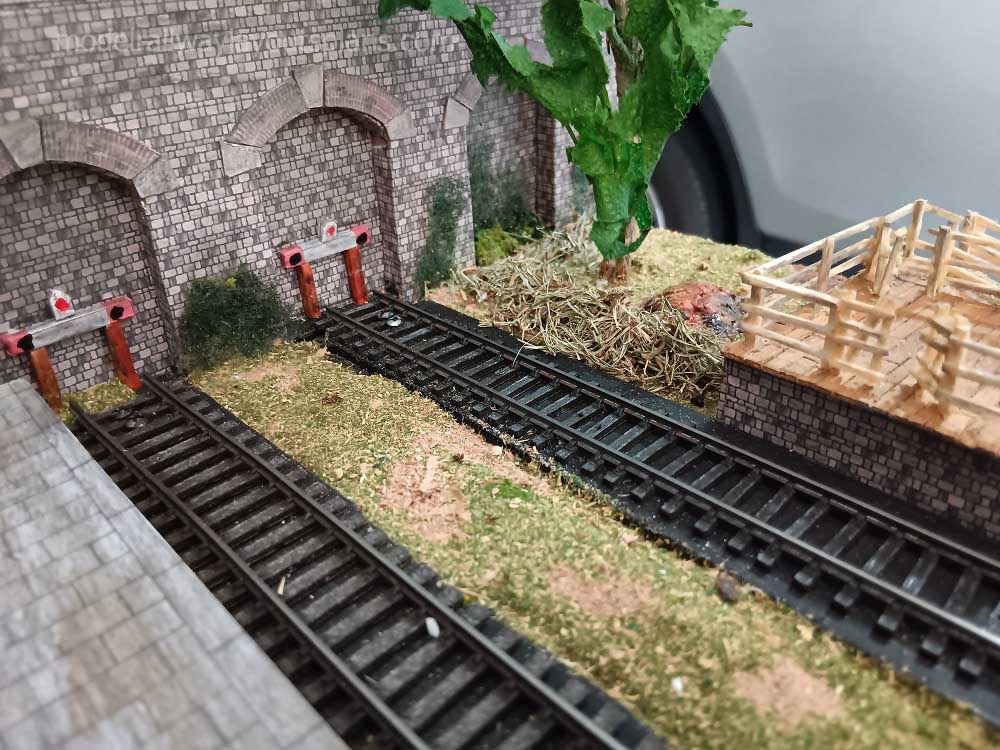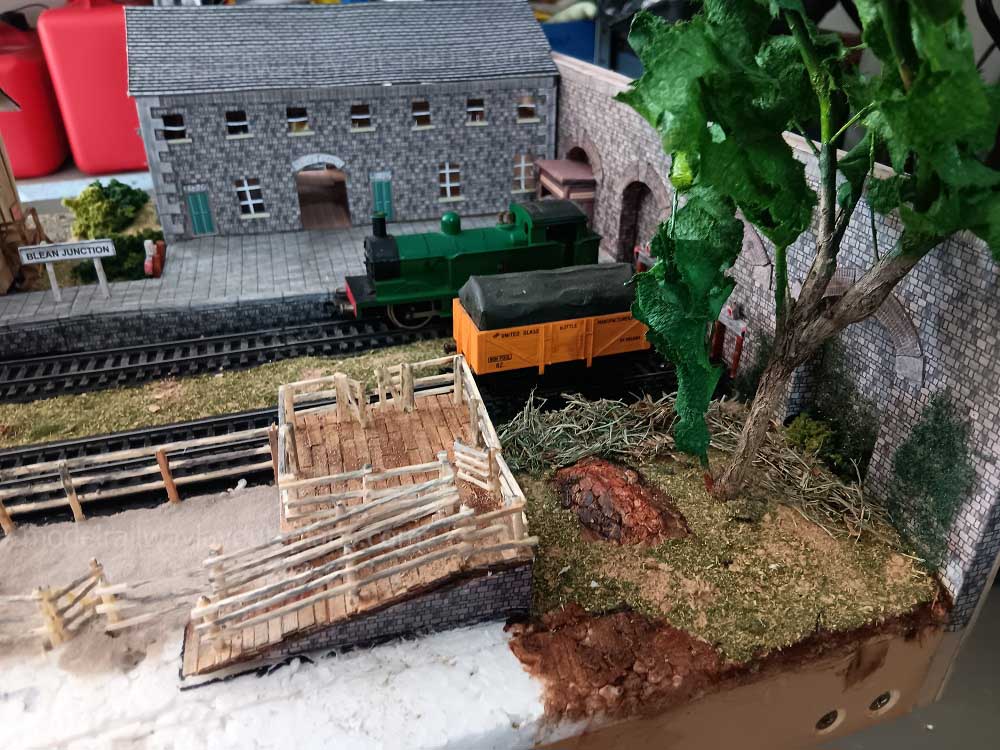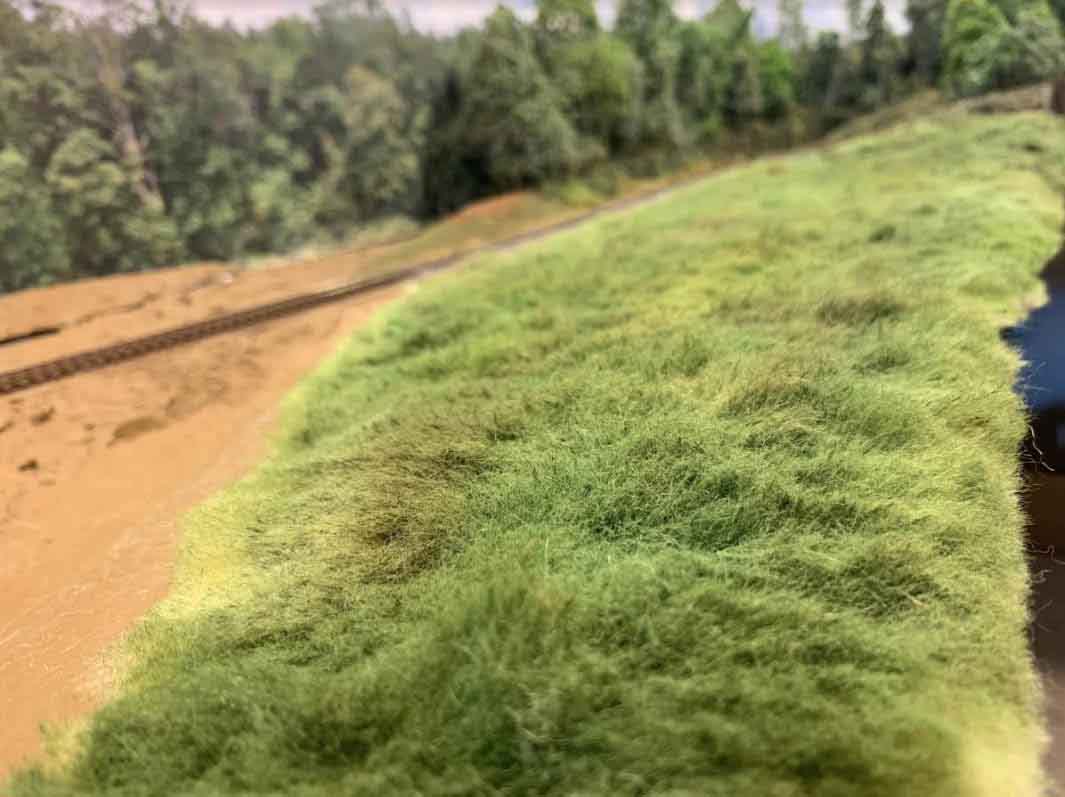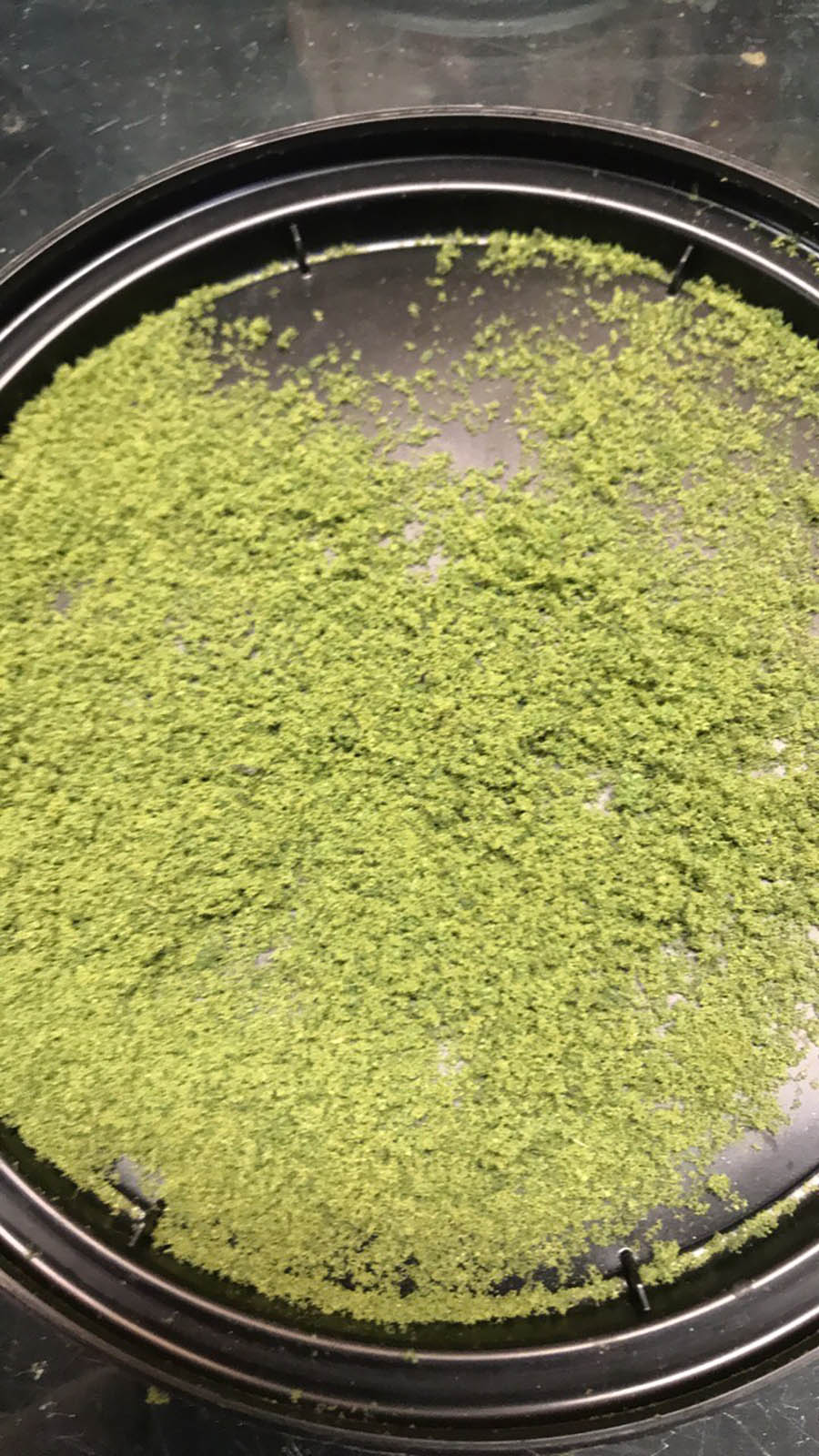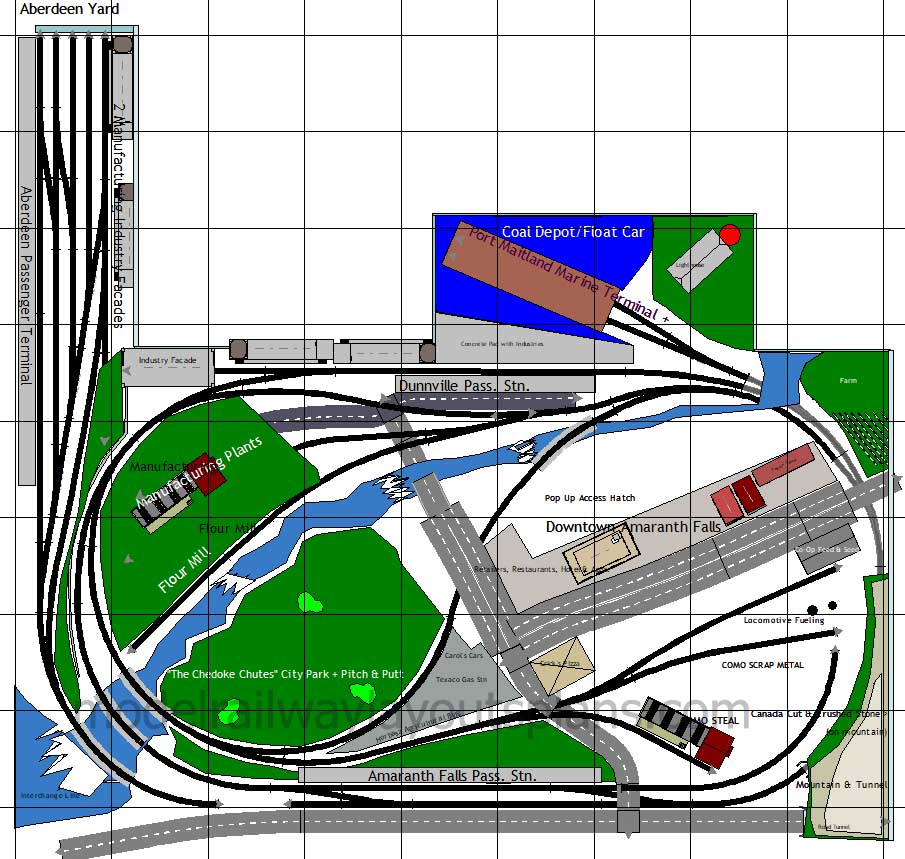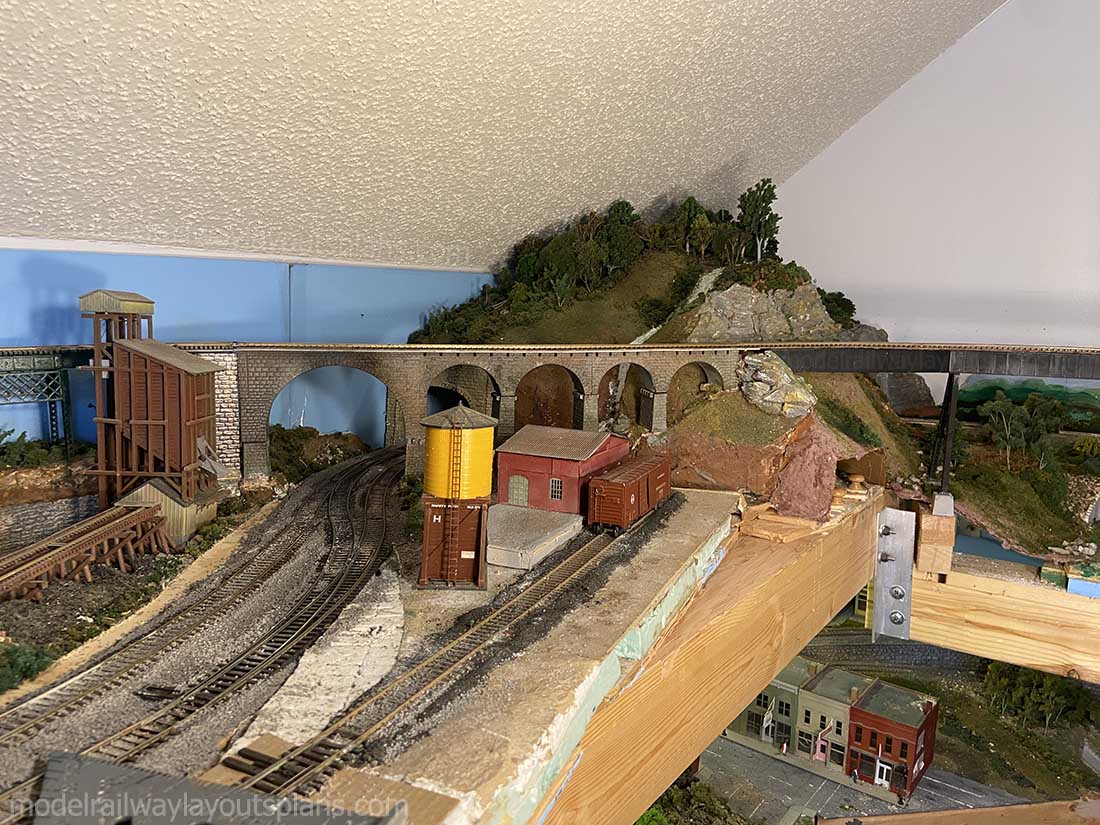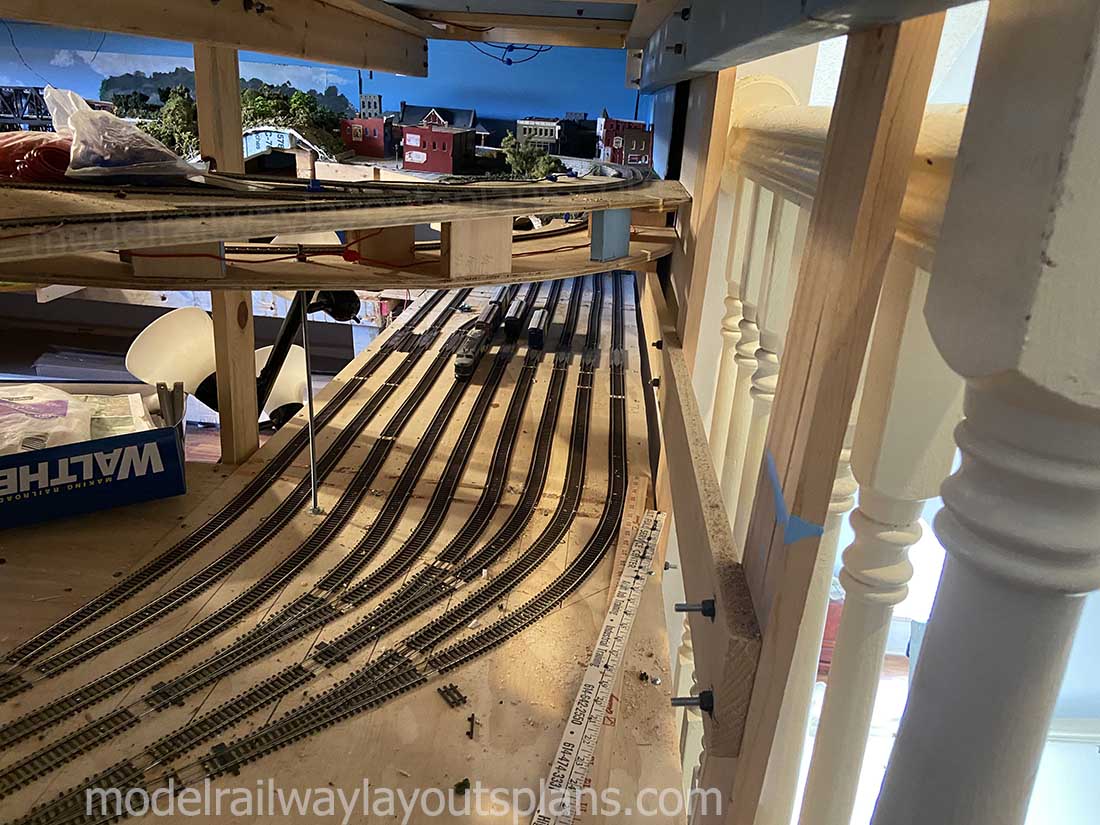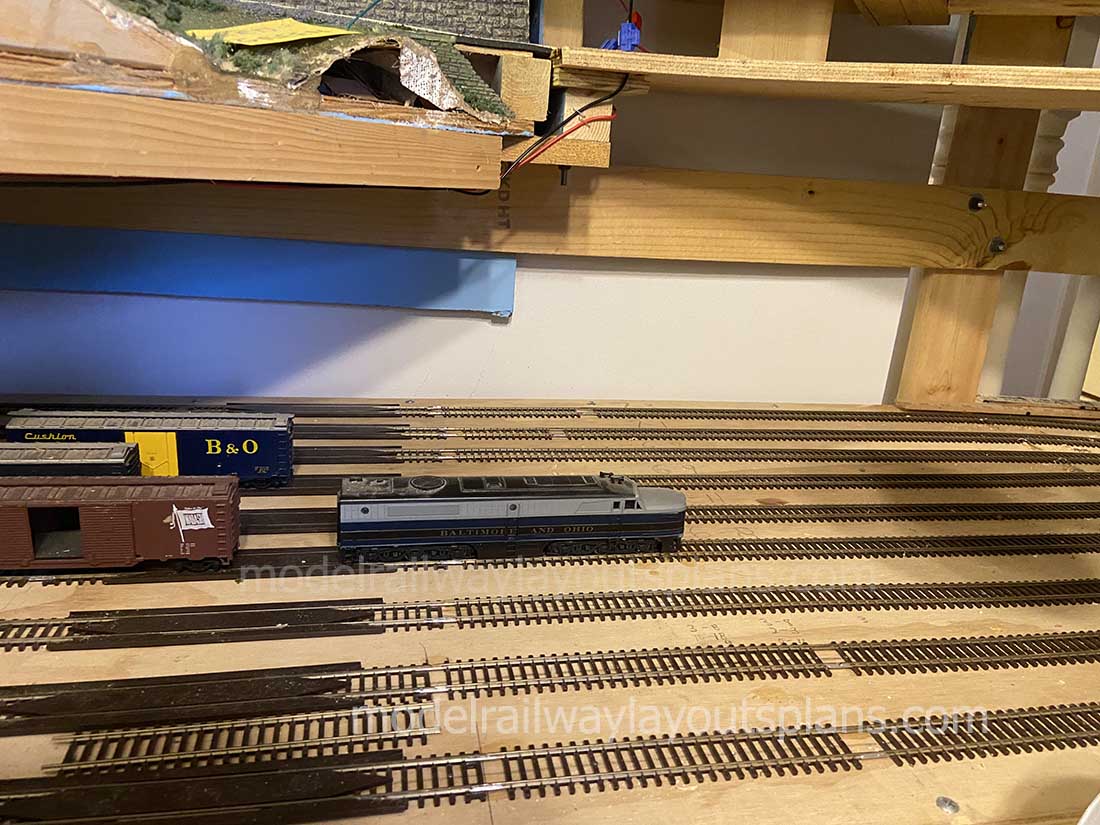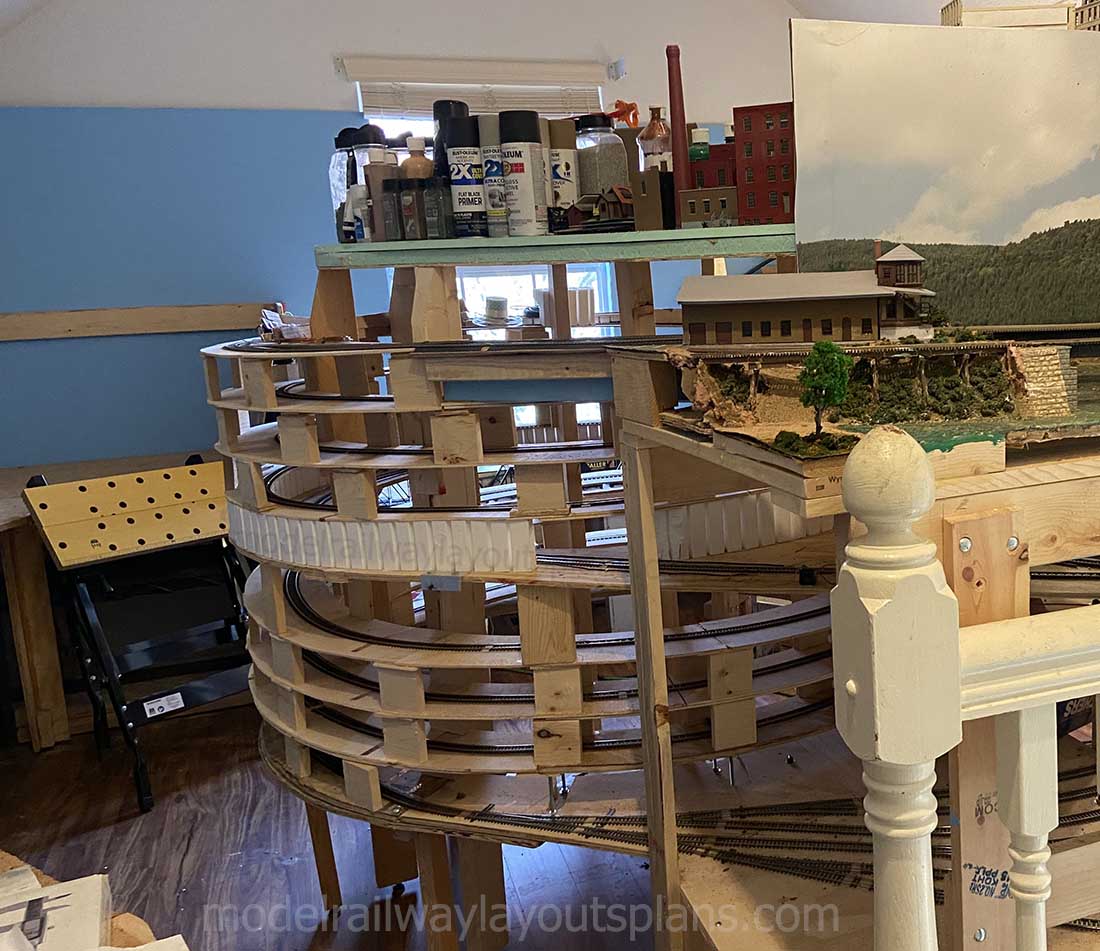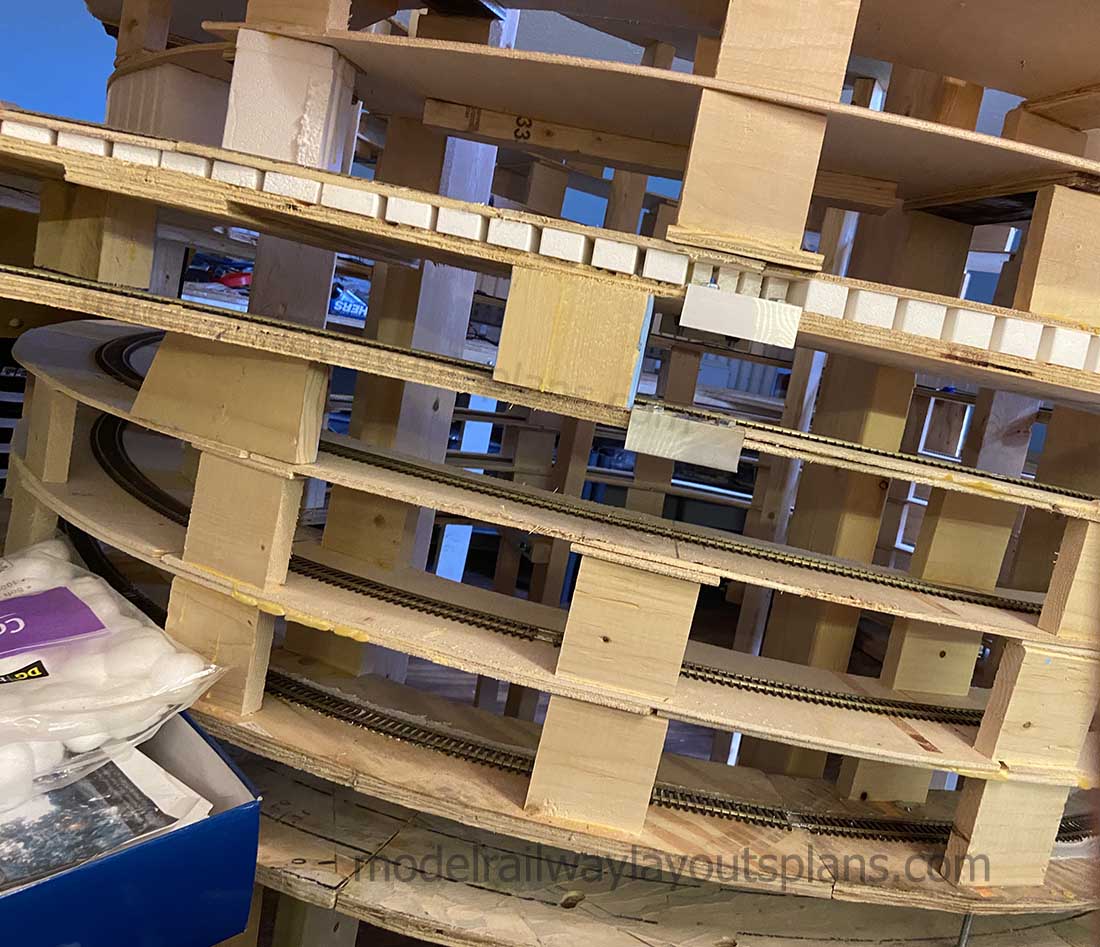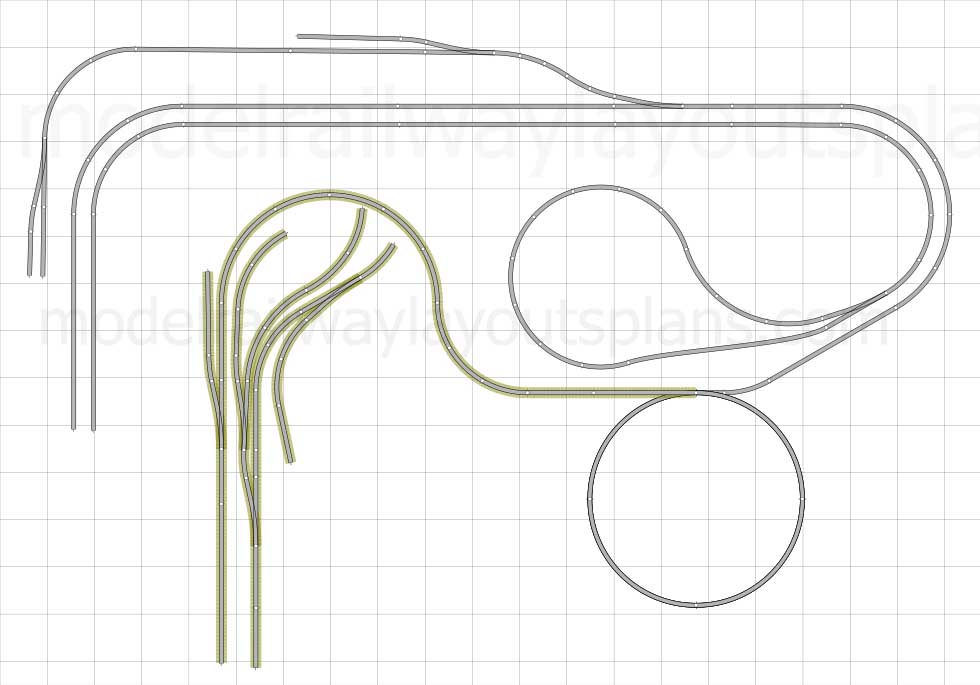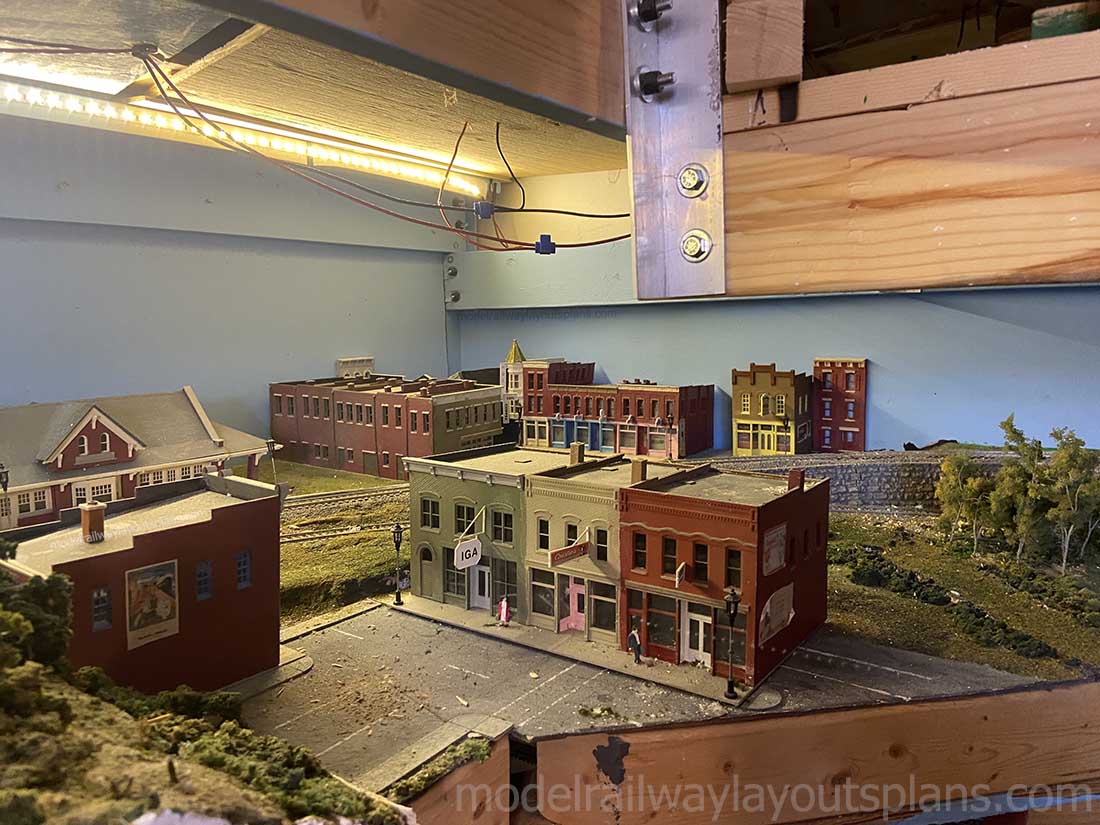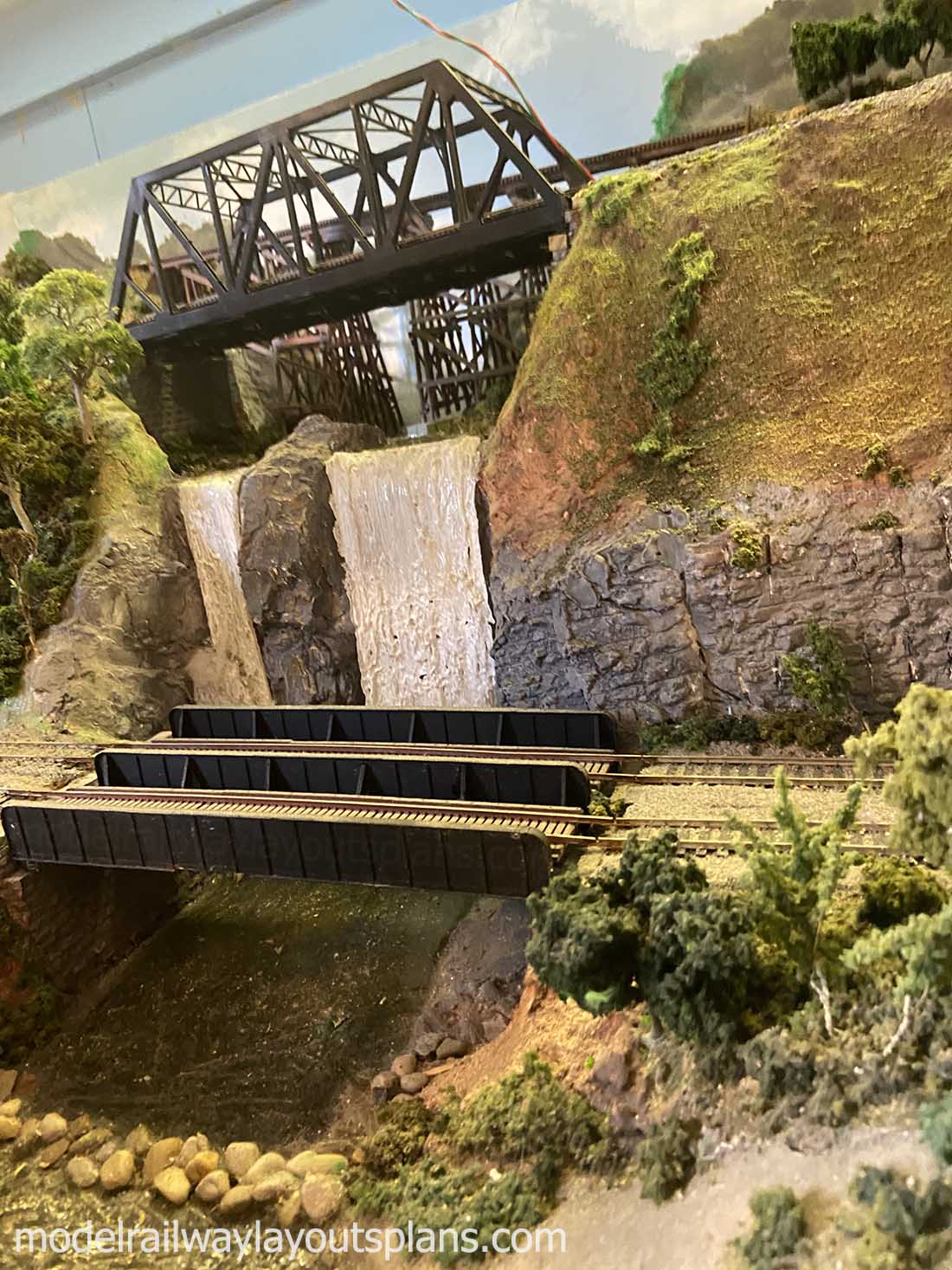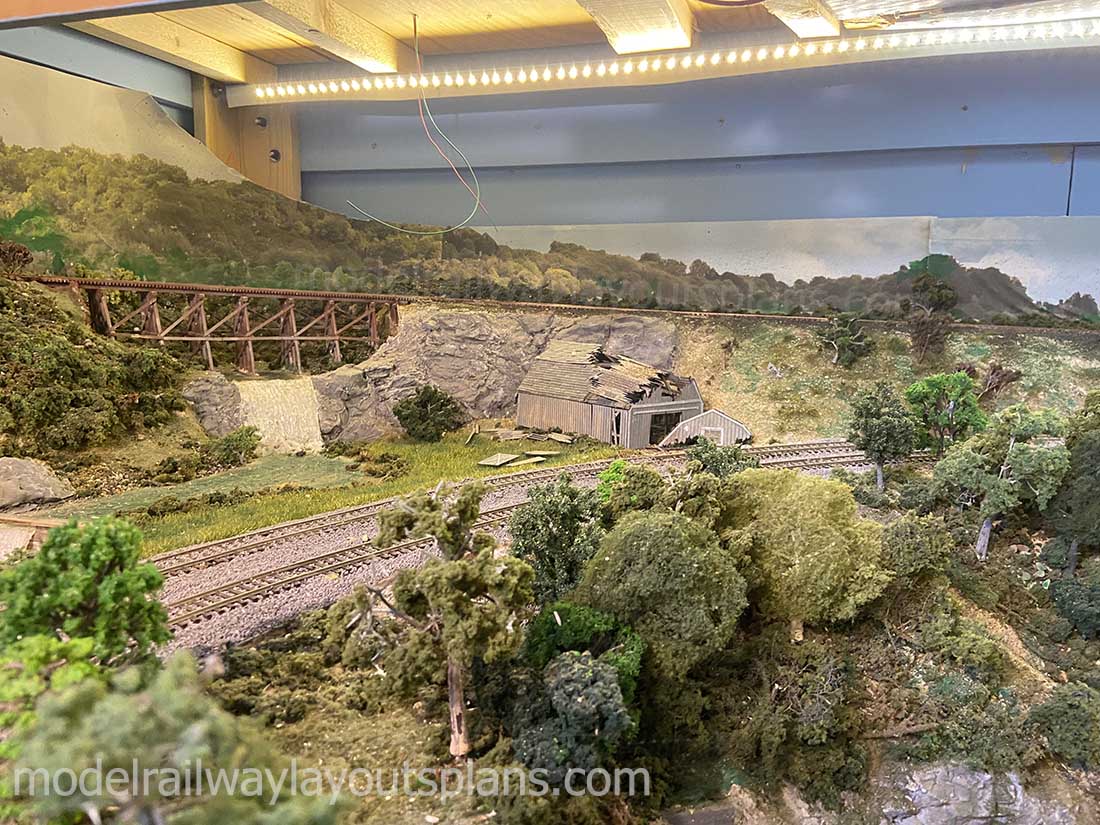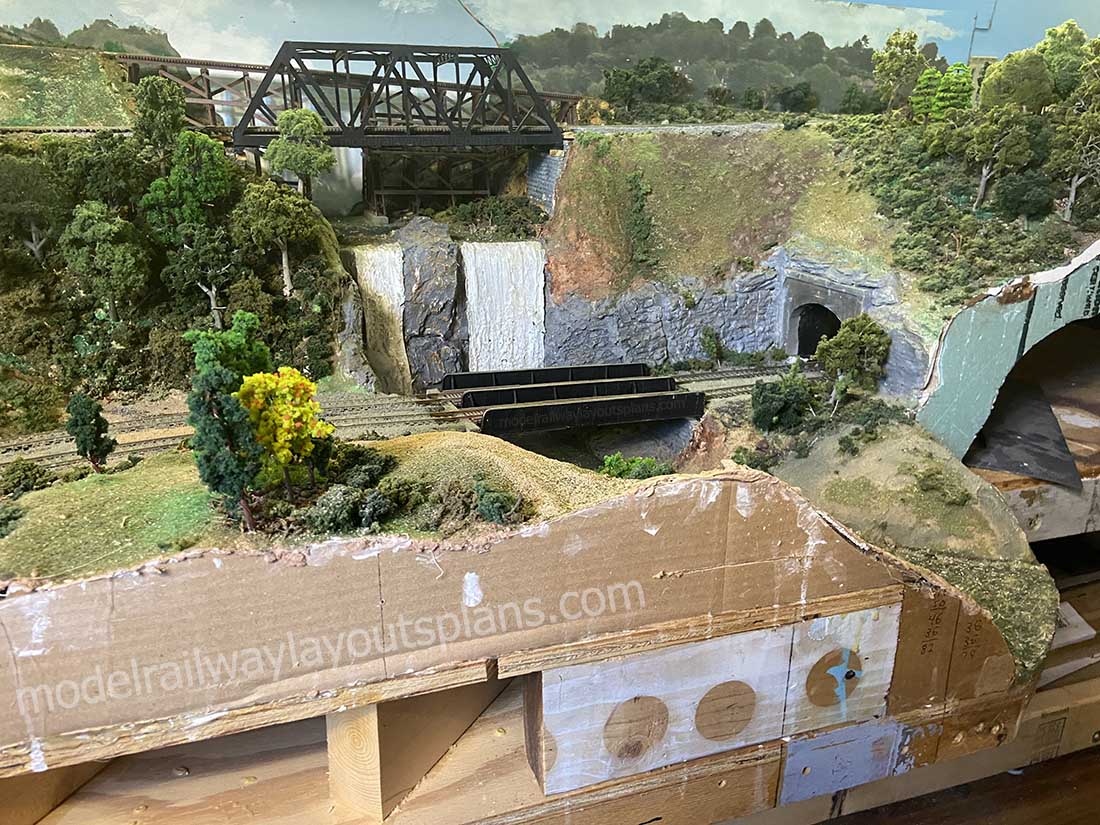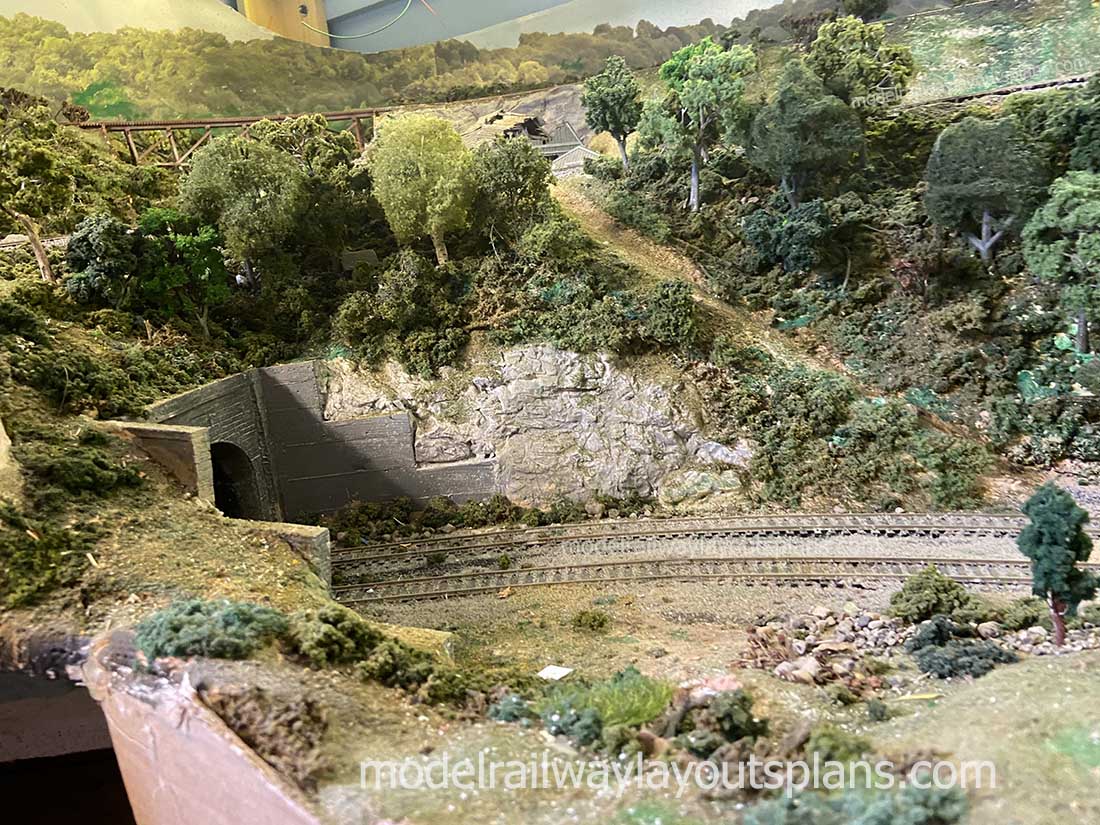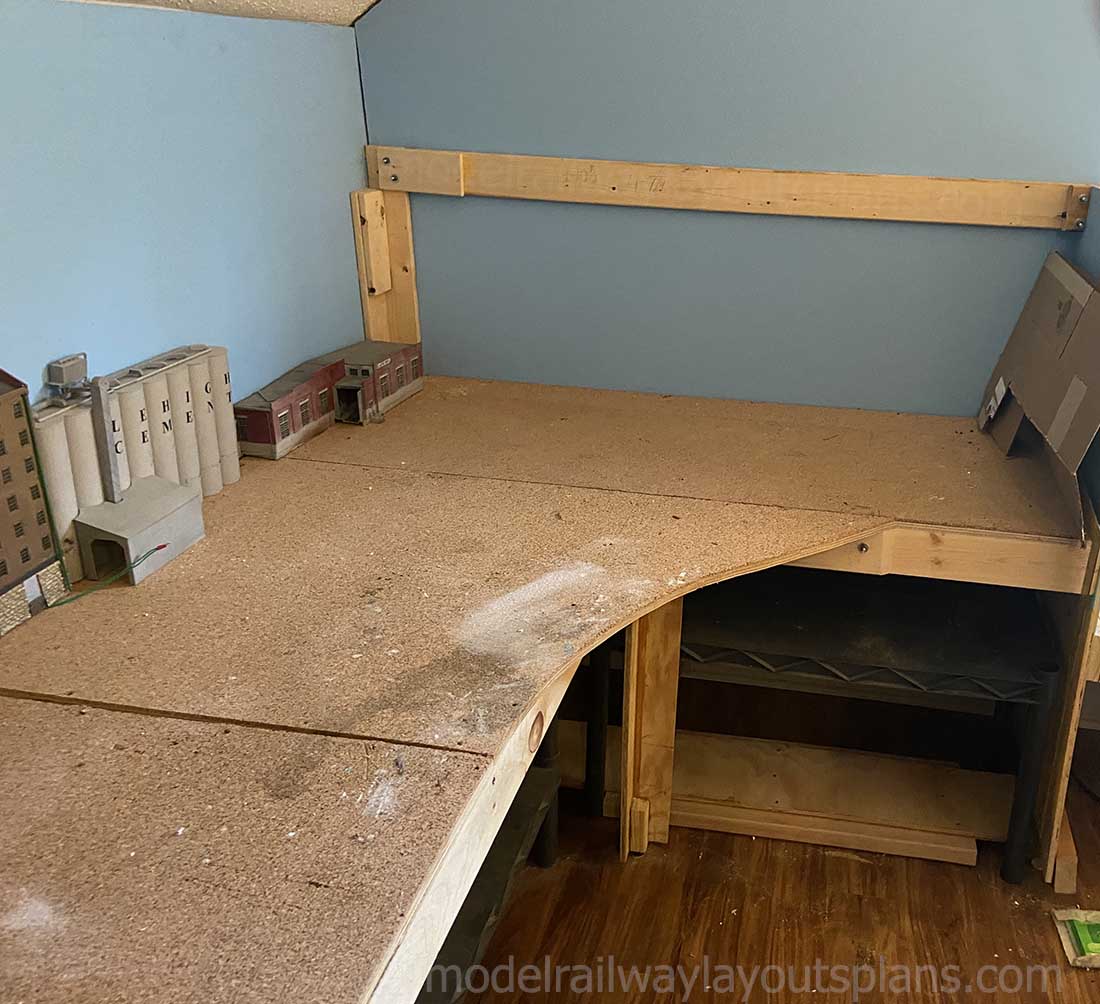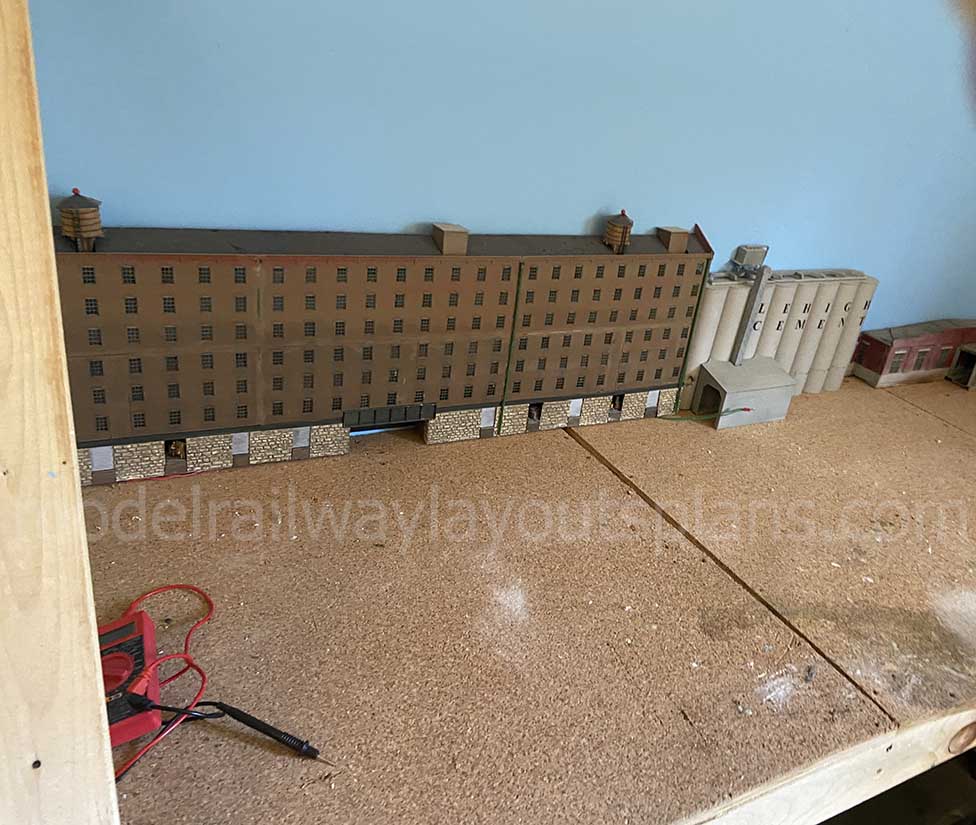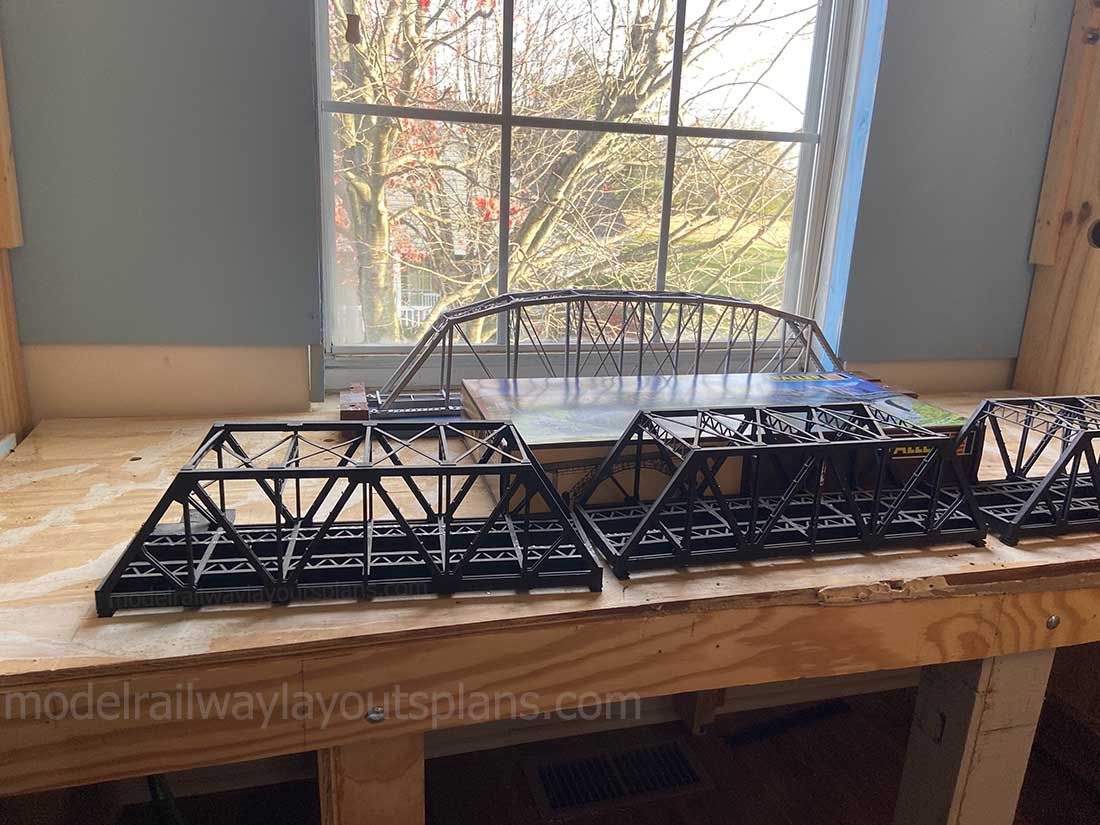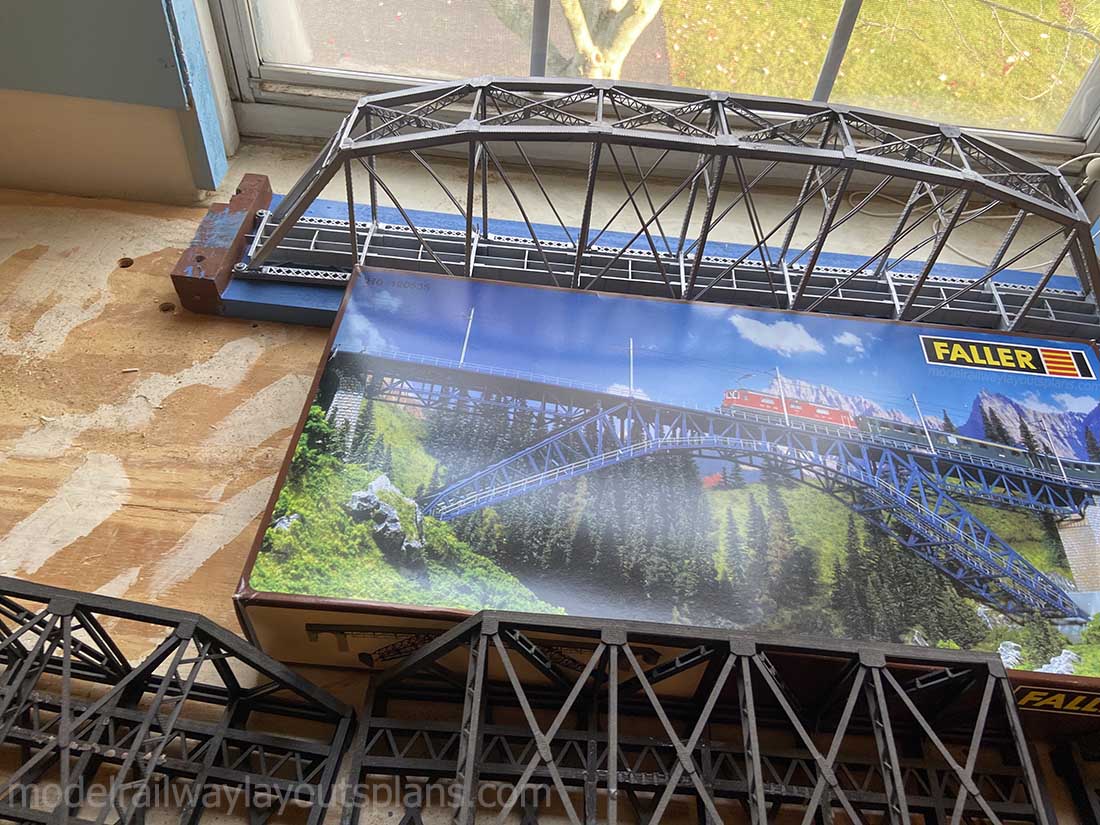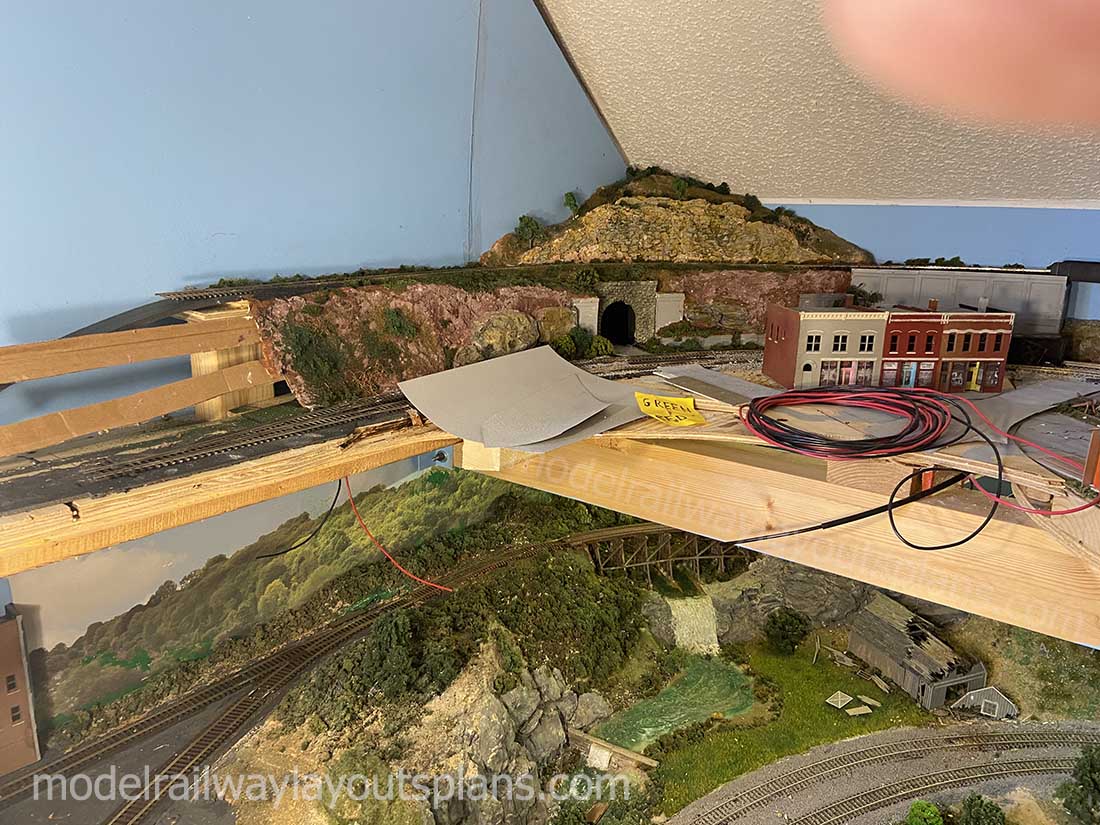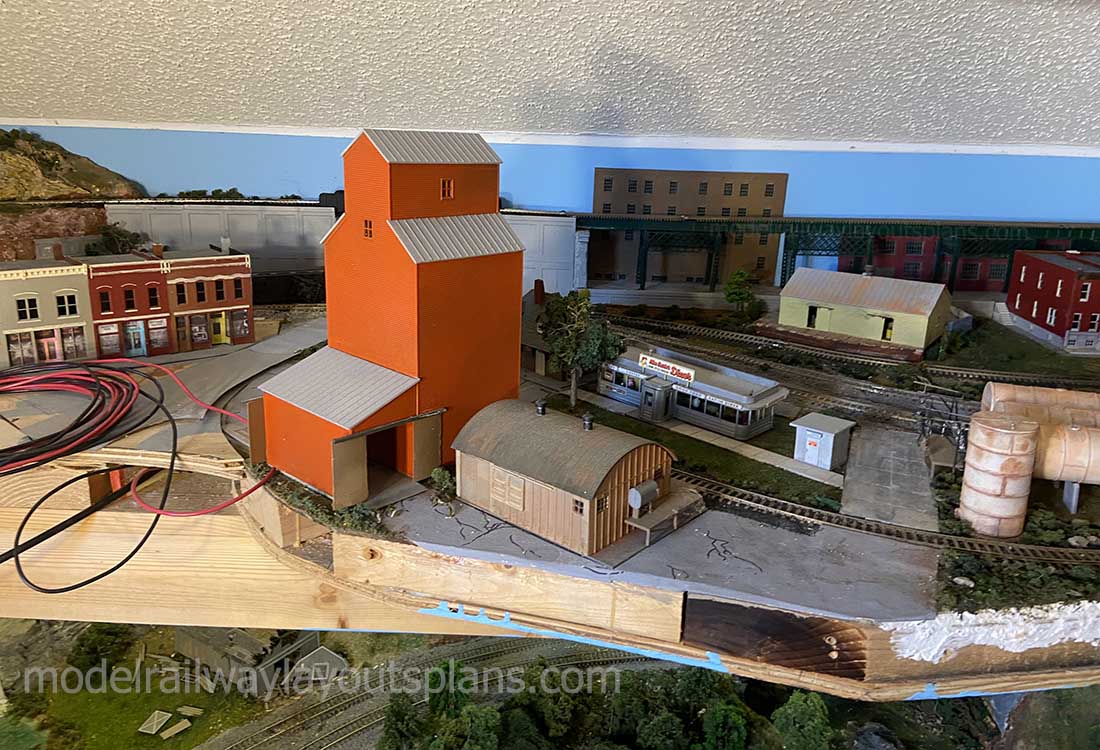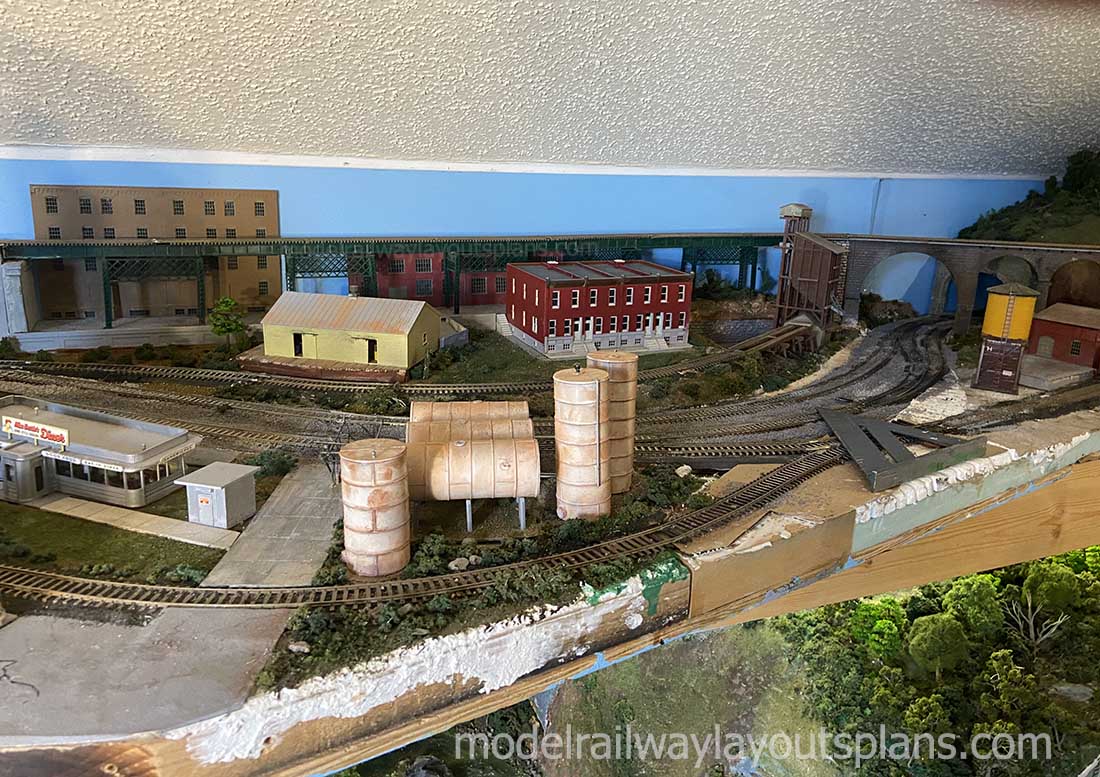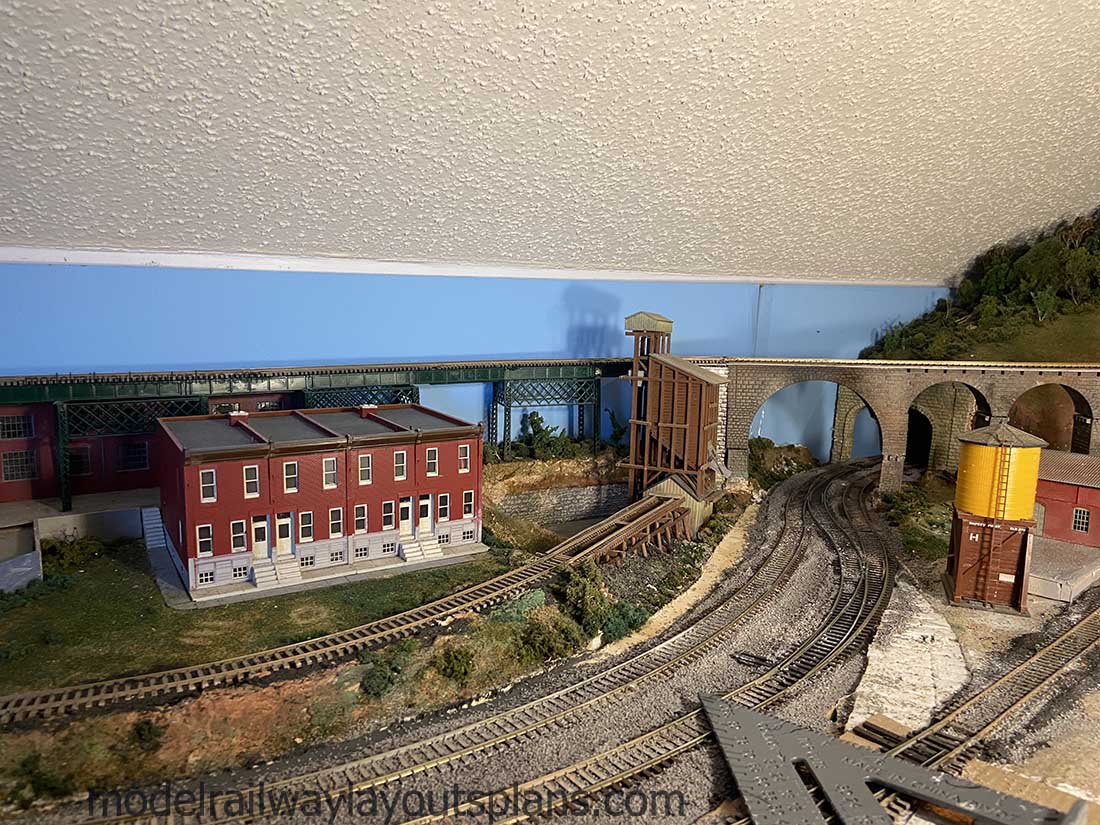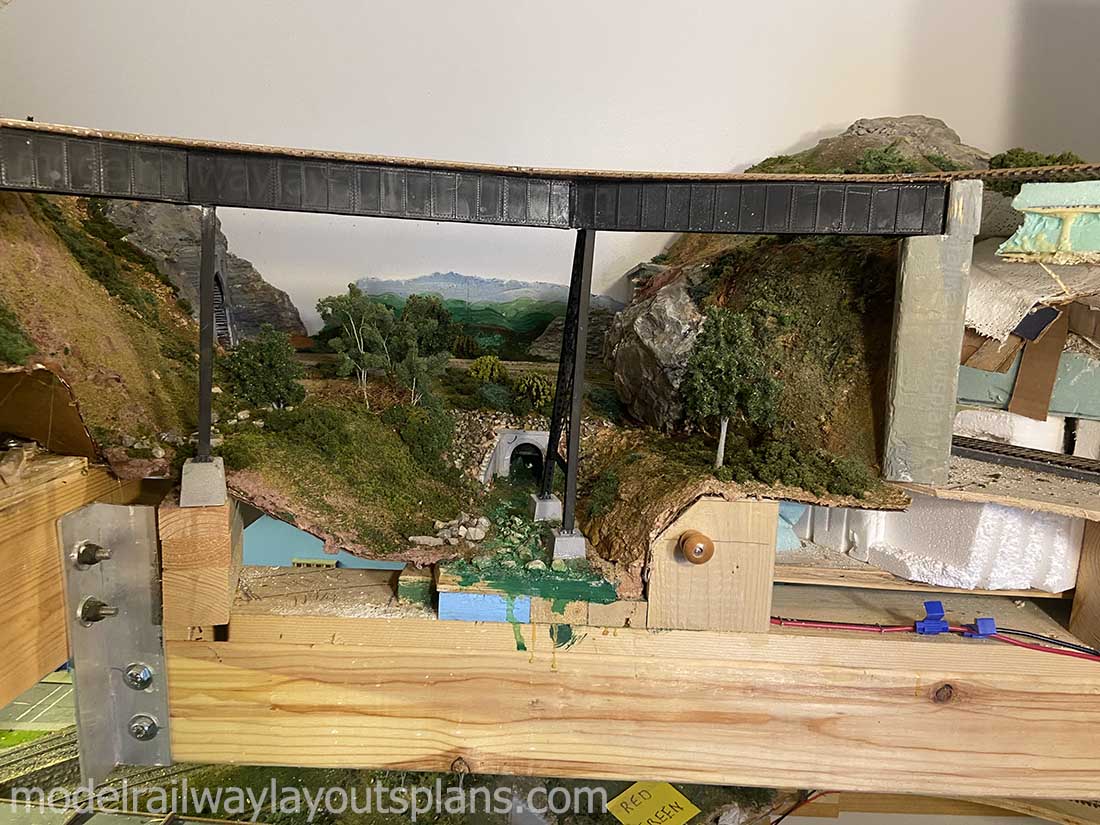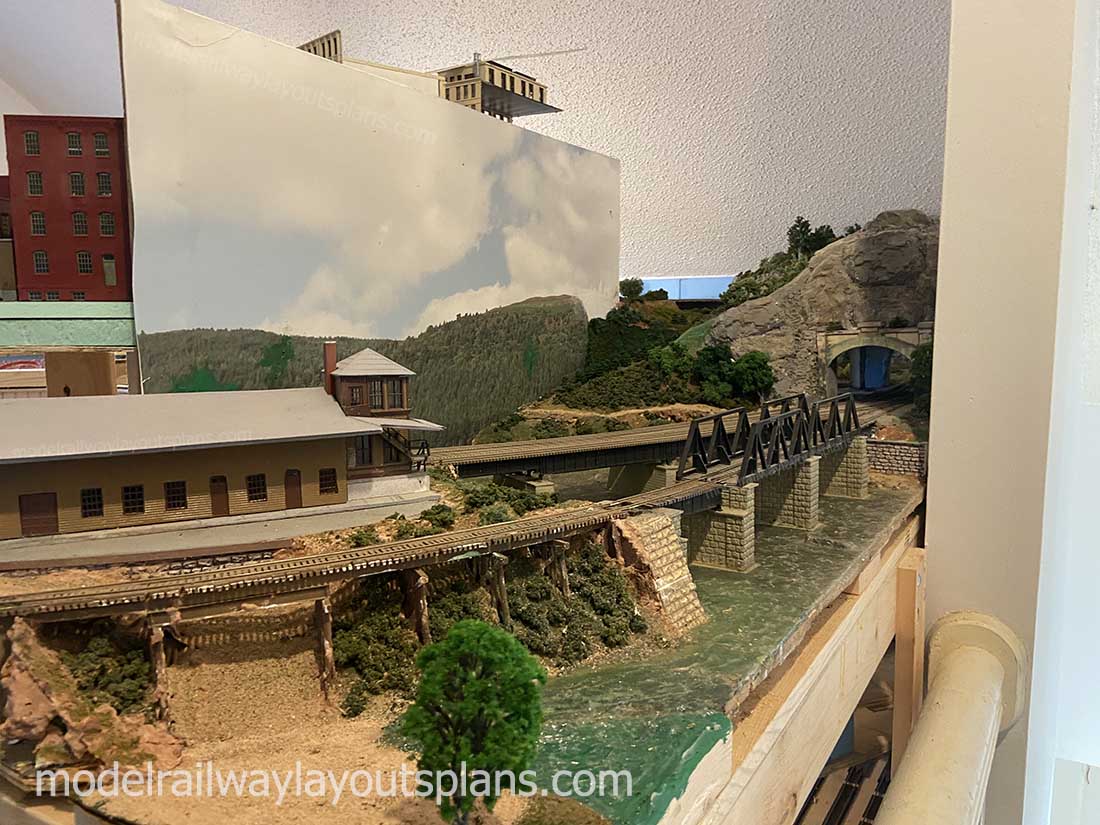Michael’s been in touch with O scale truss bridge:
“Alistair and all:
I thought it was time I provided an update on my O Gauge Slide Rock Bolter Railroad.
I always include a track plan schematic; it helps orient people to the layout; pictures alone never seem to adequately convey the whole layout.
In my last update I described how I was experimenting with 3D printed parts to scratch build O scale buildings.
The primary reason for scratch building being the difficulty I had finding suitable buildings that did not cost an arm and a leg. I have since scratch built three bridges for my layout and a large coal tipple.
O scale truss bridge 1:
The entrance to my layout is through a gap spanned by two lift-out bridges.
The first bridge started out as a 1x3x30 inch piece of lumber just to get the tracks working.
I then decided to convert it to a 30 inch girder bridge. All of the girders are 3d printed and then glued according to the bridge design.
The design is from scratch although there are obviously many prototypes and books to copy from.
The original piece of lumber is hidden within the 3d printed parts and provides strength and stability.
For quite sometime the girder bridge spanned the gap without any additional scenery. If you search around on thingiverse.com it is easy to find designs for individual parts that can be easily modified and scaled to fit almost any requirement.
O scale truss bridge 2:
Then I decided to add a second bridge spanning the entrance.
For this bridge I wanted to incorporate a vintage Lionel girder bridge that I have been lugging around for almost 60 years.
The catch was that the Lionel bridge is only 18 inches long and the gap is 30 inches. This required building a combination bridge with two plate girder extensions on either end of the vintage Lionel bridge.
Of course, without concrete supports the plate girders would just be levitating in the air. Therefore, I also had to build some scenery with concrete supports and a river.
The river and the two bridges all lift-out when needed. The moose is 3d printed. The riverbanks need more detailing but they are good for now.
O scale truss bridge 3:
Next, I built a long plate girder trestle, which is really a “bridge to nowhere”.
The trestle is 10 feet long and is used to store up to 12 pieces of rolling stock when they are not actually running on the layout.
At any given time, I have about 75 unique pieces of rolling stock on the railroad and the storage trestle acts as a fiddle yard.
The cars on the trestle sit on original (rusty, dirty) Lionel 3-rail that I have had for almost 60 years. The trestle is located on the wall west of Trinidad.
I am considering building another storage trestle on the wall north of Trinidad. Trinidad is the main location where trains originate, stage, and terminate on my railroad.
The trestle is scratch built from 3d printed parts. Using the printer, once the design is set, you can just crank out parts repeatedly until you have all that are necessary to build something of any length. Nice! (It can take a lot of time to print everything – several days, up to a few weeks…)
Coal Tipple:
The coal tipple is located at Primero. I wanted a fairly large building to provide some “wow factor”. It needed to be customized to my particular layout configuration.
The building is scratch built and has an overall footprint of about 25×32 inches and is 11 inches tall (100 x 128 x 44 scale feet).
It spans three tracks and has coal loading booms to two of those tracks.
The inspiration for my design is the Nuttallburg Mine in West Virginia. I located some nice drawings of the complex and used them as a guide for my design. (Google search for “Nuttallburg Mine Library of Congress”).
My design is only very loosely based on these drawings. I took many liberties to customize the tipple to my exact layout configuration.
For my layout, there is a large processing building parallel to the tracks with the attached tipple spanning the tracks.
The coal booms are covered as in the prototype. In the prototype, the booms could be raised and lowered into the coal cars and conveyors used to fill the cars.
In my version, the booms are fixed at a height that does not interfere with the model trains running beneath the tipple.
I have added two large loading docks at the east and west end of the processing building for equipment and resource loading.
One of the docks is curved to match my track layout. I did not include the coal silo from the prototype, instead I designed in a much larger processing building.
In the future, I plan to add a conveyor from a mine shaft-head building located elsewhere on the layout and feed it directly to the processing building. A similar arrangement exists on the prototype.
As a final note: the vast majority of the trees on my layout use 3d printed armatures of my own design – I’m using the 3d printer for as much modelling work as possible.
One of the huge advantages of using the 3d printer is the cost savings. I spent less than $20 on materials for each of the three bridges and less than $40 on materials for the coal tipple, even when considering all the trial and error necessary to get the parts to fit together perfectly.
I can print and fully flock 13 inch trees for about $1 each. You just can’t touch prices like that using pre-made parts. And with a good paint and weathering job, I can’t tell the buildings are plastic.
The coal tipple was a bit tedious every once in a while and did take a lot of time to print.
However, it wasn’t very difficult in the final analysis – everything is just squares and triangles scaled to the right size.
Throughout, I used the very simplest brain-dead piece of freeware software that came with Microsoft windows – nothing fancy at all! Anything the slightest bit complicated I probably found on thingiverse.com and modified to suit my needs.
Background info: the Slide Rock Bolter Railroad is named after a mythical backwoods creature that barrels down steep Colorado mountains feeding on unsuspecting miners, hikers, hunters, and tourists.
The layout is 3.3 scale miles of O gauge track over a 38.5’x17.5’ footprint.
I run vintage Lionel stock and prefer Santa Fe and Denver Rio Grande roads.
I have the Lionel 736 Berkshire and associated vintage railcars my grandfather gave me when I was five years old.
The cities on my railroad, Primero, Segundo, Jansen, and Trinidad, are real locations on the Primero Branch of the now defunct Colorado and Wyoming Railroad. The printer I use is an Anycubic Viper.
Enjoy!
Thanks,
Michael”
(You can see Michael’s last post here: 3D printed O scale.
A huge big thank you to Michael for sharing his O scale truss bridge pics – you all know how much I like an update.
It seems 3D printing is becoming a bigger and bigger part of this hobby as time rolls on.
That’s all for today folks.
Please do keep ’em coming.
And if today is the day you get started on your layout, the Beginner’s Guide is here.
Best
Al
PS HO scale train layouts here if that’s your thing.
Need buildings for your layout? Have a look at the Silly Discount bundle.
